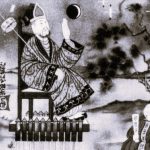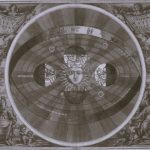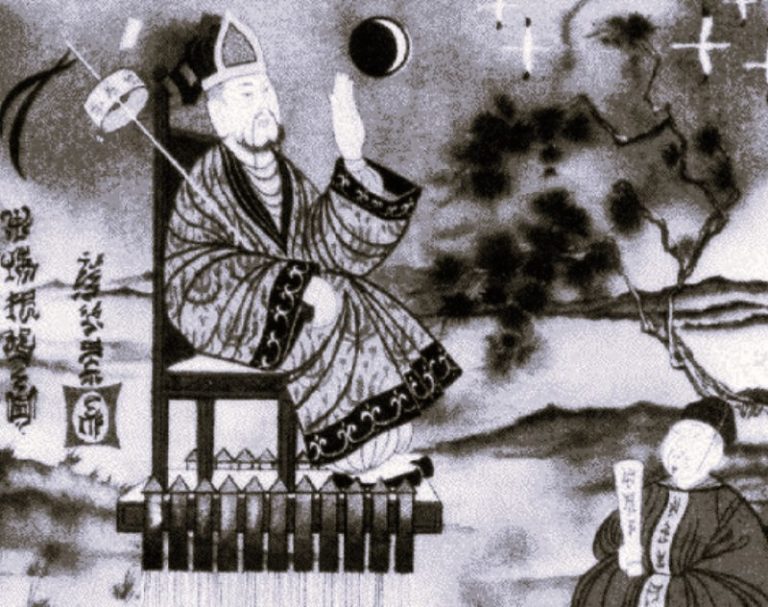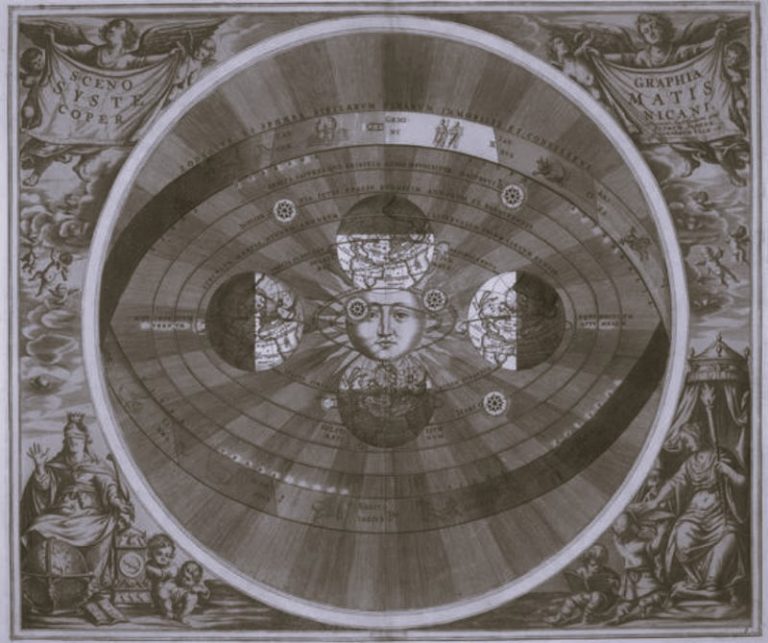

Some very odd ‘remedies’ throughout the medieval and early modern period.

By Julia Nurse
Collections Researcher
Wellcome Library
Today, campaigns to raise awareness of the menopause may offer some relief to many women who suffer symptoms. Julia Nurse explores how this challenging time in a woman’s life was ignored, misdiagnosed, or subject to some very odd ‘remedies’ throughout the medieval and early modern period.

Aristotle was not far off when he estimated the age range in which menopause occurred. According to him, the onset could occur around the 40s and could last up to the 50th year. But many women will testify that their symptoms of menopause last much longer.

It took a woman to extend this timeframe. In the 11th century, Hildegard of Bingen, a German Benedictine abbess and polymath, claimed that “the menses” could cease as late as the 60th year, sometimes even later, when “the uterus begins to be enfolded”.

Trota of Salerno, a 12th-century female physician and writer on women’s medicine, agreed with Hildegard. Trota was more specific: she said that menopause could appear later for women with a “high complexion”, who led a well-nourished, leisurely lifestyle. Such women spent much of their life pregnant, an exhausting physical strain on their bodies. But this was necessary, for to be seen as ‘infertile’ was considered shameful.

Menstrual blood was deemed a corrosive force to men, with the power to damage a penis, curdle wine and make crops fail, to name but a few of the hazards. Premenopausal women were just as dangerous, as the build-up of blood could supposedly emit poisonous vapours. Women evoked a toxic power, regardless of where they were within the menstrual cycle.

While there was lots of medical advice on how to prevent a dangerous build-up of humours by inducing menstruation (either to be fertile, or to abort unwanted pregnancies), menopause was largely glossed over, if not ignored completely.

Older women themselves, as well as their symptoms, were relegated to the background. With no hormone replacement therapies or bone-enriching nutrition guidance available, it might be evident that a woman was experiencing menopause in her appearance. Not surprisingly, representations of older women were rarely flattering: loosening skin, increased facial hair and a stooping posture plagued most who reached their 50s. No longer useful in bearing children, a woman was seen as descending into maturity and obscurity with her “wandering womb”, which was believed to be lighter and more mobile once the reproductive function ceased.

Where menopause was discussed, women were blamed for it. Failure to ensure a regular monthly cycle was viewed as ‘neglect’, which could cause early menopausal symptoms. These were described in 1670 as “rebellious distempers”: “Vapour, Flushings all over the Body, the Whites in abundance [discharge], pursiness at Stomach, loss of Appetite, Cholicks, Faintings, or other the like Weaknesses and Indispositions, which if not timely remedied, brings Ulcers or Cancers in the Womb, Dropsies, Consumptions or other fatal Distempers.”

One physician of 1739 unhelpfully said that such weaknesses were due to the way that most women “liv’d miserably”, but made no suggestion of how to improve their lives and symptoms. By the mid-17th century, women had to “be their own helpers” according to ‘The Woman’s Counsellor’.

The menopausal woman was left to suffer in silence throughout the medieval and early modern period. Perhaps faith was the only form of consolation to a lot of women as they reached their middle age, as suggested in this 17th-century etching of a woman stooped over a stick, clutching her rosary beads.

With no support from medical men, many aging women seem to have taken matters into their own hands. Despite a lack of specific cures in medical texts, women very likely used and sold medicines, as suggested by this mezzotint from 1771 showing ‘Mother Gibson’ apparently promoting her own medicine to two other women.

The only available remedies for menopause-related symptoms were cure-alls that claimed to treat a host of other ‘disorders’ too. Balsamic pills, made from ingredients such as crushed woodlice, flowers and spices, would have offered placebo relief at most, yet they were being sold by and for women in 18th-century London. Sellers include Mrs Hall, a perfumer on the Strand and Mrs Grigg, a milliner in Southwark.

A similar multi-use ‘tonic’ was made and sold “only by Mrs Turmeau”. Advertised as a “family medicine”, one lethal ingredient in Turmeau’s “vegeto-mineral water” was lead, which would, no doubt, have caused more harm than good.

In Mrs Ayscough’s recipe book, from the late 17th century, references to women’s troubles are largely confined to recipes for miscarriage, “Hard travaile in child birth”, assistance with “afterpains”, “sore nipples” or just the “flowing of flowers” (periods). Recipes for general “agues” (fevers) or distempers might have relieved some menopausal symptoms. The Countess of Barke’s may have been one such remedy. Containing “Crabbs eyes”, “harts horne”, “amber” and “one dram of Bezer stone”, there was “not any sikness wherein it availeth not”, but it was a very rare and pricey powder at £10 an ounce – the equivalent of well over £1,000 today!

A more familiar remedy suggested in Ayscough’s manuscript included rosemary steeped in a syrup of roses, which was prescribed for the “meakness of the memory”, a tonic that would not be out of place today.

Today, hormone replacement therapy is widely used to treat symptoms of menopause. But it doesn’t suit everyone, and many women also continue to turn to complementary and alternative medicines, including herbal therapies that have been used for hundreds of years. Medical literature is sparse, considering the number of people affected, but women are now less likely to be forced to “be their own helpers” unsupported, and doctors are calling for more studies so that (unlike their historic predecessors) they can discuss and treat menopause symptoms in an informed way.
Originally published by Wellcome Library, 01.18.2022, under the terms of Creative Commons Attribution 4.0 International license.






